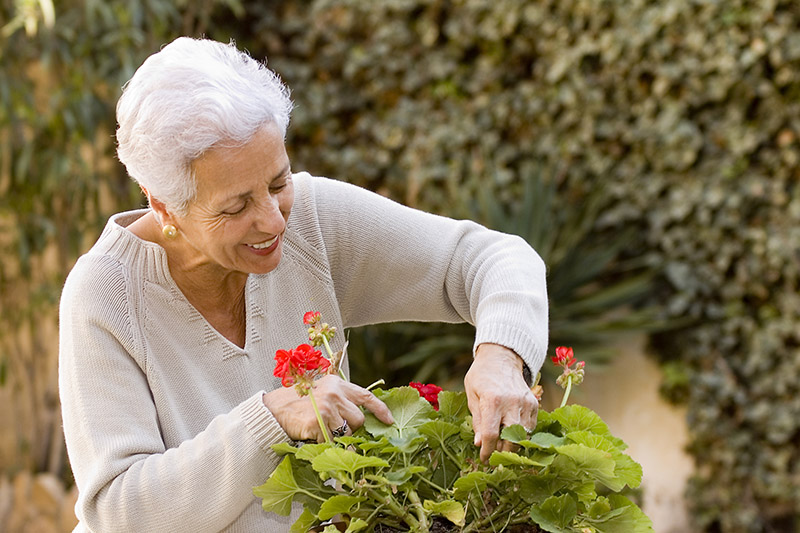
Shielding yourself from skin cancer is even more important as we age. Between 40 and 50 percent of Americans who live to age 65 will have skin cancer at least once. It’s also been reported that more than half of skin cancer-related deaths occur in persons more than 65 years old. The longer people live, the more likely they are to develop skin cancer, and the greater their chances of dying from it.
Why? Most skin cancer results from sun damage over the course of a lifetime. In fact, the majority of our skin’s UV exposure, the primary cause of skin cancer, occurs after age 40. Since seniors have lived longer, they are more at risk because they’ve experienced the most UV exposure and have the most sun damage. If you’ve received five sunburns over your lifetime, your risk of melanoma doubles. Each successive burn raises your risk further. And as the Earth’s protective ozone layer has thinned in the last few decades, our exposure to stronger, more harmful ultraviolet light has increased. Sun protection should remain a priority throughout our lives because a burn in later age could be the one to trigger cancer.
What else makes seniors more susceptible to skin cancer?
• Reduced immune systems
• Reduced ability to heal
• Thinner skin
• Damage to skin from exposure to smoking and other pollutants in the environment
3 Ways to Help Avoid Skin Cancer as We Age
1. Stay out of tanning beds.
More people develop skin cancer because of UV tanning than develop lung cancer because of smoking.
2. Practice effective sun protection daily.
Wear broad spectrum (UVA/UVB), water resistant sunscreen with an SPF of 30 or more, even on cloudy days. Wear protective clothing on arms and legs, wide-brimmed hats and sun glasses when possible. Seek shade, especially when the sun is the strongest between 10 AM and 2 PM. Use extra caution when near reflective surfaces like water, snow and sand. Get vitamin D safely through a healthy diet, which may include a supplement.
3. Check your skin.
Periodic head-to-toe self-checks are recommended. Watch for any growth with an irregular border, multiple colors and increased size or any other notable change. If you see something suspicious, make an appointment and show your primary care provider or dermatologist.
 Ron Swensen, MD
Ron Swensen, MD
As Medical Director of Valley Medical Center’s Oncology Services, I am alarmed at the exponential rise in patients experiencing skin cancer. May, Skin Cancer Awareness Month, is the perfect time to recommit ourselves to practicing thorough, consistent sun protection. Remember, a healthy tan is not healthy.
Need to find a doctor? See valleymed.org.

